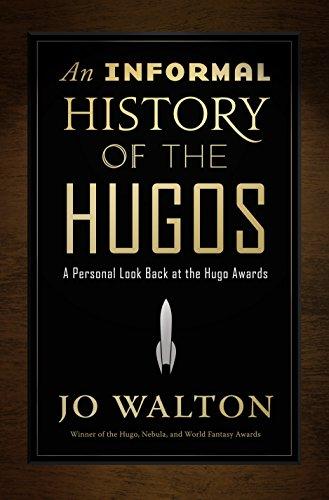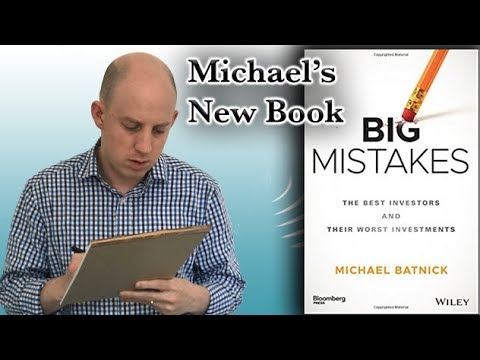
This photo resembles my “Read Real Soon” stack. How many books do you have waiting to be read? What is the book you most want to read from your book stack?
Author Archives: george
FRIDAY’S FORGOTTEN BOOKS #490: AN INFORMAL HISTORY OF THE HUGOS: A PERSONAL LOOK BACK AT THE HUGO AWARDS, 1953-2000 By Jo Walton
Between 2010 and 2013, Jo Walton wrote a series of posts for Tor.com. Those posts have been collected in An Informal History of the Hugos: A Personal Look Back at the Hugo Awards, 1953-2000. Jo Walton reviews the Hugo finalists and winners from the Hugo’s inception up to the year 2000. Walton asserts that each year’s finalists gives us a clear picture about the state of science fiction during those years. I’m a fan of Jo Walton’s SF novels and I praised her What Makes This Book So Great. You can read my review here. An Informal History of the Hugos is clearly a labor of love. If you’re a science fiction fan, this is a must-buy! Highly recommended! GRADE: A
TABLE OF CONTENTS:
Introduction 11
1953 Hugo Award Winners and Nominees 17
Essay: “Telepaths, Murder, and Typographical Tricks: Alfred Bester’s The Demolished Man” 21
1954 Hugo Award Winners and Nominees 24
1955 Hugo Award Winners and Nominees 25
1956 Hugo Award Winners and Nominees 29
Essay: “Parliamentary Democracy with Martians: Robert A. Heinlein’s Double Star” 32
1957 Hugo Award Winners and Nominees 35
1958 Hugo Award Winners and Nominees 40
1959 Hugo Award Winners and Nominees 44
Essay: “Every Outward, Robert A. Heinlein’s Have Spacesuit—Will Travel” 50
1960 Hugo Award Winners and Nominees 56
Essay: “Over the Hump: Robert A. Heinlein’s Starship Troopers” 60
1961 Hugo Award Winners and Nominees 64
Essay: “Dark Ages and Doubt: Walter M. Miller’s A Canticle for Leibowitz” 69
Essay: “Really Good Fun: Poul Anderson’s The High Crusade” 72
1962 Hugo Award Winners and Nominees 75
Essay: “Smug Messiah: Robert A. Heinlein’s Stranger in a Strange Land” 82
1963 Hugo Award Winners and Nominees 87
Essay: “A Future That Never Came: Arthur C. Clarke’s A Fall of Moondust” 94
1964 Hugo Award Winners and Nominees 98
Essay: “I Think I’ll Go for a Walk and Think About Aliens: Clifford Simak’s Way Station” 104
1965 Hugo Award Winners and Nominees 106
Essay: “Telepathy and Healing: John Brunner’s The Whole Man (aka, Telepathists}” 112
1966 Hugo Award Winners and Nominees 114
Essay: Wisecracking, Aliens, and Hot Places: Roger Zelazny’s This Immortal” 124
Essay: In League with the Future: Frank Herbert’s Dune” 125
1967 Hugo Award Winners and Nominees 129
Essay: “A Self-Aware Computer and a Revolution on the Moon: Robert A. Heinlein’s The Moon is a Harsh Mistress” 138
1968 Hugo Award Winners and Nominees 142
Essay: “Fantasy Disguised as Science Fiction Disguised as Fantasy: Roger Zelazny’s Lord of Light” 152
1969 Hugo Award Winners and Nominees 155
Essay: “Growing Up for Real: Alexei Panshin’s Rite of Passage” 165
1970 Hugo Award Winners and Nominees 168
1971 Hugo Award Winners and Nominees 176
1972 Hugo Award Winners and Nominees 188
Essay: “Effective Dreaming: Ursula K. Le Guin’s The Lathe of Heaven” 198
1973 Hugo Award Winners and Nominees 200
Essay: “Great Aliens, Rubber Humans: Isaac Asimov’s The Gods Themselves” 213
Essay: “Dying Inside by Robert Silverberg” 214
1974 Hugo Award Winners and Nominees 217
Essay: “Menopause, Aliens, and Fun: Larry Niven’s Protector” 227
1975 Hugo Award Winners and Nominees 230
Essay: “Clear-sighted Utopia: Ursula K. Le Guin’s The Dispossessed” 242
1976 Hugo Award Winners and Nominees 244
1977 Hugo Award Winners and Nominees 256
1978 Hugo Award Winners and Nominees 266
1979 Hugo Award Winners and Nominees 278
1980 Hugo Award Winners and Nominees 288
Essay: “Sunlit Clouds Beyond the Iron Grating: Thomas M. Disch’s On the Wings of Song” 298
1981 Hugo Award Winners and Nominees 300
1982 Hugo Award Winners and Nominees 312
1983 Hugo Award Winners and Nominees 322
1984 Hugo Award Winners and Nominees 332
Essay: The Tea, the Statue, the Dragon, and You: R. A. MacAvoy’s Tea With the Black Dragon” 342
1985 Hugo Award Winners and Nominees 344
1986 Hugo Award Winners and Nominees 357
Essay: “Who is Alien? C. J. Cherryh’s Cuckoo’s Egg” 369
1987 Hugo Award Winners and Nominees 371
1988 Hugo Award Winners and Nominees 382
1989 Hugo Award Winners and Nominees 395
Essay: “Designing People and Societies: C. J. Cherryh’s Cyteen” 408
Essay: “The Most Expensive Plumbers in the Galaxy: Louis McMaster Bujold’s Falling Free” 411
1990 Hugo Award Winners and Nominees 413
1991 Hugo Award Winners and Nominees 426
1992 Hugo Award Winners and Nominees 439
1993 Hugo Award Winners and Nominees 452
Essay: “The Net of a Million Lies: Vernor Vinge’s A Fire Upon the Deep” 465
Essay: “Time Travel and the Black Death: Connie Willis’s Doomsday Book” 468
1994 Hugo Award Winners and Nominees 475
1995 Hugo Award Winners and Nominees 487
1996 Hugo Award Winners and Nominees 499
1997 Hugo Award Winners and Nominees 513
1998 Hugo Award Winners and Nominees 525
Essay: “Transformative in This as Everything Else: Walter Jon Williams’s Metropolitan and City on Fire” 535
1999 Hugo Award Winners and Nominees 538
2000 Hugo Award Winners and Nominees 552
Essay: “So High, So Low, So Many Things to Know: Vernor Vinge’s A Deepness in the Sky” 565
Conclusion 571
BROKEN MEATS By David Hambling
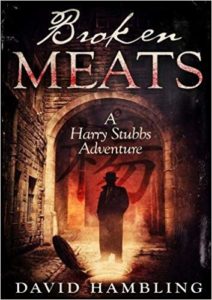
After his harrowing adventures in The Elder Ice (you can read my review here), ex-boxer Harry Stubbs returns to economic hardship in 1925 England. Harry finds work as a “guide” to a man from Singapore named Yang. Yang is interested in the work of Roslyn D’Onston, a one-time journalist who turned into a sorcerer. D’Onston was a suspect in the Jack the Ripper murders. Harry Stubbs finds himself in the grip of occult powers and necromancy. If you’re in the mood for a quirky adventure novel, Broken Meats delivers. GRADE: B+
ROGUE PROTOCOL By Martha Wells
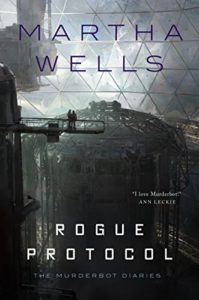
Murderbot–a self-liberated Security robot–is trying to flee Human space. But, he has a way to go. Murderbot manages to find a place aboard a transport ship but suspects this could be a mistake when the human passengers bring a lot of armament with them. Rogue Protocol continues the story of an Artificial Intelligence who critiques humans and human activity on practically every page. Another corporate plot powers the novella (153 pages) as Murderbot meets Miki, a robot who presents hope and danger. Then all Hell breaks loose! If you’re in the mood for something Very Different, you might want to try Martha Wells’s Murderbot series. GRADE: B+
You can read my review of All Systems Red here and my review of Artificial Condition here. For a detailed interview with Martha Wells, just click here.
EIGHTH GRADE
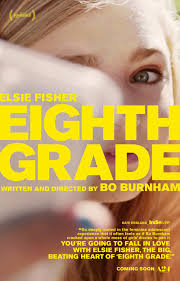
Elsie Fisher plays 13-year-old Kayla Day who is about to graduate from Eighth Grade. Director and screenwriter Bo Burnham captures the angst of Eighth Grade, both for Kayla and the other Eighth Graders. We see a group completely in the thrall of Social Media. Much of this movie consists of Kayla on her iPhone or laptop. All the the social interactions are herky-jerky.
Everyone, even the adults (and especially Kayla’s bumbling but good-hearted father played well by Josh Hamilton) constantly confronts the awkwardness of conversation. Texting is so much easier! Eighth Grade piles painful situation upon painful situation on poor Kayla and her father. But, High School beckons with its own troubling problems. You can see why teenage drug addiction and teen suicide are increasing given the anxiety and stresses young people have to deal with today. Kayla offers a measure of Hope. What are your memories of Eighth Grade? GRADE: B+
BIG MISTAKES: THE BEST INVESTORS AND THEIR WORST INVESTMENTS By Michael Batnick
“By three methods may we learn wisdom: First, by reflection, which is noblest; Second by imitation, which is easier;
and Third by experience with is the bitterest.” –Confucius
Around 1993, my 10-year-old son Patrick suggested, “Dad, I think you should buy some APPLE stock.” Patrick used APPLE computers at school and loved the design. In one of the those moments you’d like to have back, I ignored Patrick’s advice. APPLE stock at the time was just about a dollar per share and I could have easily bought a 1000 shares. Now, APPLE is a trillion dollar company and I could have had a couple more zeros to the right of my Net Worth number. I made a mistake…a Big Mistake.
Reading Michael Batnick’s Big Mistakes: The Best Investors and Their Worst Investments made me feel better because these investment geniuses also committed blunders. Warren Buffett bought Dexter Shoes (remember them?). He could have paid cash, but instead he paid for the company in Berkshire Hathaway stock. Dexter Shoes went bankrupt and those shares of Berkshire Hathaway would be worth $6 billion dollars today. Jack Bogle, who invented the Index Fund (a fund that mirrors the DOW, the NASDAQ, or the S&P 500)–a vast improvement over investing in Mutual Funds–lost millions with the first company he ran. John Maynard Keynes, the brilliant British economist, lost most of his money when the Stock Market crashed in 1929. All of these investors later went on to succeed in the Stock Market, but they all have scars from their failures…like I do. Have you made any Big Mistakes? GRADE: A-
TABLE OF CONTENTS:
Preface
Acknowledgments
Chapter 1: Benjamin Graham
There Are No Iron-Clad Laws
Chapter 2:Jesse Livermore
Manage Your Risk
Chapter 3: Mark Twain
Don’t Get Attached
Chapter 4: John Meriwether
Genius’s Limits
Chapter 5: Jack Bogle
Find What Works for You
Chapter 6: Michael Steinhardt
Stay in Your Lane
Chapter 7: Jerry Tsai
You’re Not As Smart As You Think
Chapter 8: Warren Buffett
Beware of Overconfidence
Chapter 9: Bill Ackman
Get Off Your Soapbox
Chapter 10: Stanley Druckenmiller
Hard Lessons Can Be Necessary
Chapter 11: Sequoia
The Risks of Concentrated Investing
Chapter 12: John Maynard Keynes
The Most Addictive Game
Chapter 13: John Paulson
You Only Need to Win Once
Chapter 14: Charlie Munger
Handling Big Losses
Chapter 15: Chris Sacca
Dealing With Regret
Chapter 16: Michael Batnick
Looking In the Mirror
About the Author
Index
WYCLIFFE AND THE REDHEAD By W. J. Burley
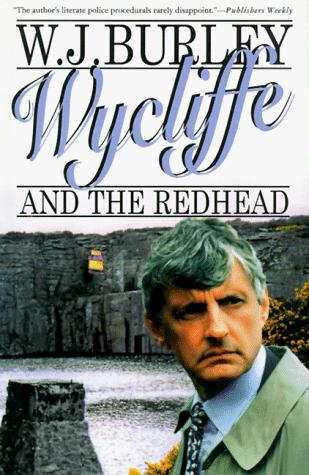
Detective Superintendent Wycliffe finds himself drawn into an investigation into the death of redhead, Morwenna Barker. Morwenna worked in Wycliffe’s favorite antiquarian bookshop owned by Simon Meagor, a shy, lonely, middle-aged bookseller who seems like an unlikely suspect. But, Meagor played a key role in Morwenna’s father’s murder trial. Why would a woman who held a grudge against Meagor volunteer to work in his bookshop? As Wycliffe untangles the complexity of Morwenna’s past, two more deaths enter the picture. The search for clues takes Wycliffe into the past where previous investigations missed essential evidence. If you’re looking for a traditional police procedural with a twisty plot and vivid characters, Wycliffe and the Redhead delivers. GRADE: B+
I hope you enjoyed REDHEAD WEEK. Normal posting returns tomorrow.
THE CASE OF THE RESTLESS REDHEAD By Erle Stanley Gardner
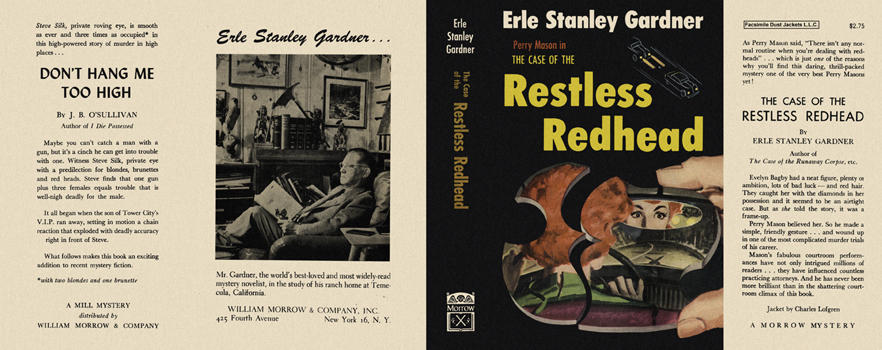

On September 21, 1957 the first episode of Perry Mason aired on CBS. And that initial episode was “The Case of the Restless Redhead” based on Erle Stanley Gardner’s mystery published in 1954. Aspiring redhead actress Evelyn Bagby finds a .38 caliber pistol in her hotel room. She calls Perry Mason who tells her to bring the gun to him. On the secluded road to Mason’s office, a man with a hood over his head tries to drive Evelyn Bagby’s car off the road. Evelyn reaches into her purse and fires two wild shots at the hooded man and his car and speeds on.
Evelyn finally reaches Perry Mason’s office when the police arrive. On that secluded road, there’s a crashed car and a hooded man with a hole in his head. Perry Mason has to deal with the questions of Evelyn’s past and which gun actually killed the hooded man.
The main differences in the TV episode (which follows Erle Stanley Gardner’s The Case of the Restless Redhead fairly closely) and the novel are a reduction of subplots and fewer red herrings. All in all, Perry Mason starts its long run on CBS with a clever episode. Do you have a favorite Perry Mason novel or TV episode? GRADE: B+ (for both the book and the TV epsiode)
FORGOTTEN BOOKS #489: A REDHEAD FOR MIKE SHAYNE By Brett Halliday
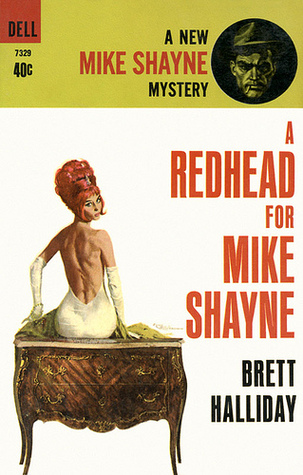

I love the Robert McGinnis cover on A Redhead for Mike Shayne. I’m sure that’s why I bought it so many years ago! This DELL paperback from 1964 is very much a product of its time. Mike Shayne shoots and kills a hood attempting to loot a warehouse Shayne is protecting. But in the melee, the criminal fires his odd weapon: six bullets narrowly miss Shayne’s head. Shayne takes the weapon from the crime scene and discovers it’s a Russian automatic pistol. How did a thug come to own an advanced automatic weapon? In Florida, all roads lead to Cuba and Castro. Shayne starts to unravel this curious case when he’s confronted by a beautiful redhead newspaper columnist, Molly Morgan. As the bodies pile up, Shayne and the redhead butt heads in the investigation. Shayne arranges one of his patented shoot-outs to smoke out the Bad Guys. This is the 48th mystery in the Mike Shayne series, but you can read it without any knowledge of the previous books. GRADE: B
THE REDHEAD OF AZTEC WELLS By W. C. Tuttle
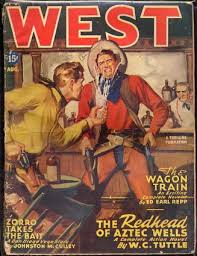
I’m a big fan of W. C. Tuttle’s Westerns. Tuttle manages to juggle all the elements required by western stories with humor and mystery. In The Redhead of Aztec Wells (1946) Tuttle introduces young redhead Johnny Avery whose father and uncle are framed for a bank robbery and then murdered in cold blood. Johnny escapes and grows up with revenge growing with each year. Now, years later, Johnny returns to the scene of crime with the intention of clearing his name and dispensing Justice. Johnny has a quick draw and a quick temper. If you’re looking for a clever mystery with a vengeance them, you’ll enjoy The Redhead of Aztec Wells. GRADE: B+
